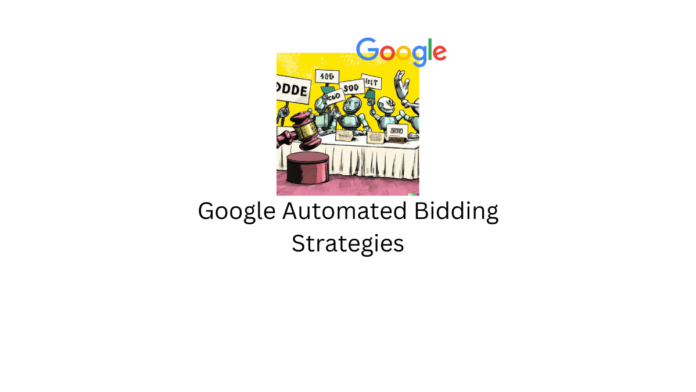Last updated - November 16, 2023
Is Google’s automated bidding strategy good or not? This is the most common question that every business holder asks when they use Google’s automated bidding strategy for their business advertisement.
Automated bidding strategy is now a hot topic in this digital industry. However, there are so many articles that can tell you the use of Google automated bidding strategy. Here we are discussing the pros and cons of automated bidding strategy.
If you have not used an automated bidding strategy then go through this article before starting to use it. Don’t skip any part of the below section.
Here are the different types of automated bidding strategies that we have jotted down. Let’s dig into the pros and cons of individual google automated bidding strategies.
Manual Bidding


A manual bidding strategy is the easiest way to bid your ad on the Google ads platform. The user can set bids manually as well as keyword-level. This is the best place to start ad bidding on the Google platform.
Cons of Manual Bidding Strategy
- First, it takes a long time to conduct the whole process. Apart from this, this strategy takes extra time for you to look at the performance.
- Suppose, the keyword needs to change, first, you need to decide what change needs and then you can make the change.
- Many users consider that manual bidding is not informed. And, you can see the campaign when Google allows you to review the performance.
Note: these downsides do not mean that a manual bidding strategy is not good instead of all automation. Along with the benefits of Google ads automated bidding, the manual bidding strategy has the capability to meet your requirement. You must accept these factors when you use it.
Enhanced CPC
Enhanced CPC is similar to an annual bidding strategy. But the difference is, here Google algorithm makes adjustments to the manually set bid. You can easily check by selecting enhanced CPC from the binding type.
With this bidding strategy, Google ads can decrease or increase a bid for keywords on an individual purpose basis. It can change up to 30%. But, now this limitation has been removed, Google ads have the capability to adjust to any level.
Cons of Enhanced CPC Bidding Strategy
- Since enhanced CPC adjusts keyword bids with no limitation in place, there is a chance that CPCs can meet a high target than what is profitable for the user account.
- The target of the bid is to increase the conversation but not necessarily to meet the target.
- However, it is the furthest step of the automated Google bidding strategy, so always take a look at your ad campaign.
Maximize Conversions
Maximizing conversation is different from enhanced CPC and it is considered a fully automated bidding strategy. It means you don’t need to set individual keyword bids. It is simply a CPC bid based on the user’s goal.
This bid strategy is designed to get maximum conversation. So, let’s see the cons of maximizing conversions.
Cons of Maximize Conversions Bidding Strategy
- It is a straightforward bidding strategy. First, make sure that you will keep track of the conversation otherwise Google takes the wrong discussion to find traffic willing to convert.
- This bidding strategy is not good for short-term goals. Since Google spent a full budget to convert performance.
- If you have goals for efficiency or profitability, then we would request to follow Target ROAS or Target CPA bidding.
Target CPA
According to Google, “Target CPA bidding is a Smart Bidding strategy that sets bids for you to get as many conversions (customer actions) as possible. When you create the Target CPA (target cost-per-action) bid strategy, you set an average cost you’d like to pay for each conversion.”
Here, Google adjusts bids to maximum generate. This strategy is useful for individual conversations. It tries to balance the time and target CPA.
Cons of Target CPA Bidding Strategy:
- It is useless if you do not enable conversion tracking.
- Don’t think that you just turn on the tracking option, you can leave other processes. To drive conversation performance, you need to provide conversation data. If you don’t have conversation volume then the Target CPA can’t make smart decisions.
Target ROAS
Target ROAS works similarly to Target CPA but it can return traffic as per your ad spend. That is why it is called Target ROAS (return on ad spend).
With Target ROAS, Google set bid limits. It helps you to achieve your Target ROAS.
Cons of Target ROAS Bidding Strategy:
- Make sure you have conversation tracking data as well as conversation value. Otherwise, Target ROAS does not make any right decision for your ad campaign.
- On this note, make sure that you don’t set any high rate of Target ROAS. Start with a low target to understand the entire process of this fully automated bidding strategy.
Maximize Clicks
This strategy is similar to maximizing conversations. With this budding strategy, Google allows you to get maximum traffic to your website.
While you spend your budget daily, Google ensures that you will get the maximum click.
Cons Of Maximize Clicks Bidding Strategy
- Always take a closer look at your ad campaign.
- Google will work to deliver maximum clicks, but it is difficult to spend money on a daily basis.
- If you see that it is still unable to meet your goals, you need to adjust the setting manually.
Final Words
So, these are the different types of Google bidding strategies that people used to get traffic, increase conversation and build strong relationships with the audience.
Now, you know the downside of these automated ad bidding. When you use them, make sure you remember these factors. Hopefully, you have got information from this article. To get this type of info, you can visit our website.











